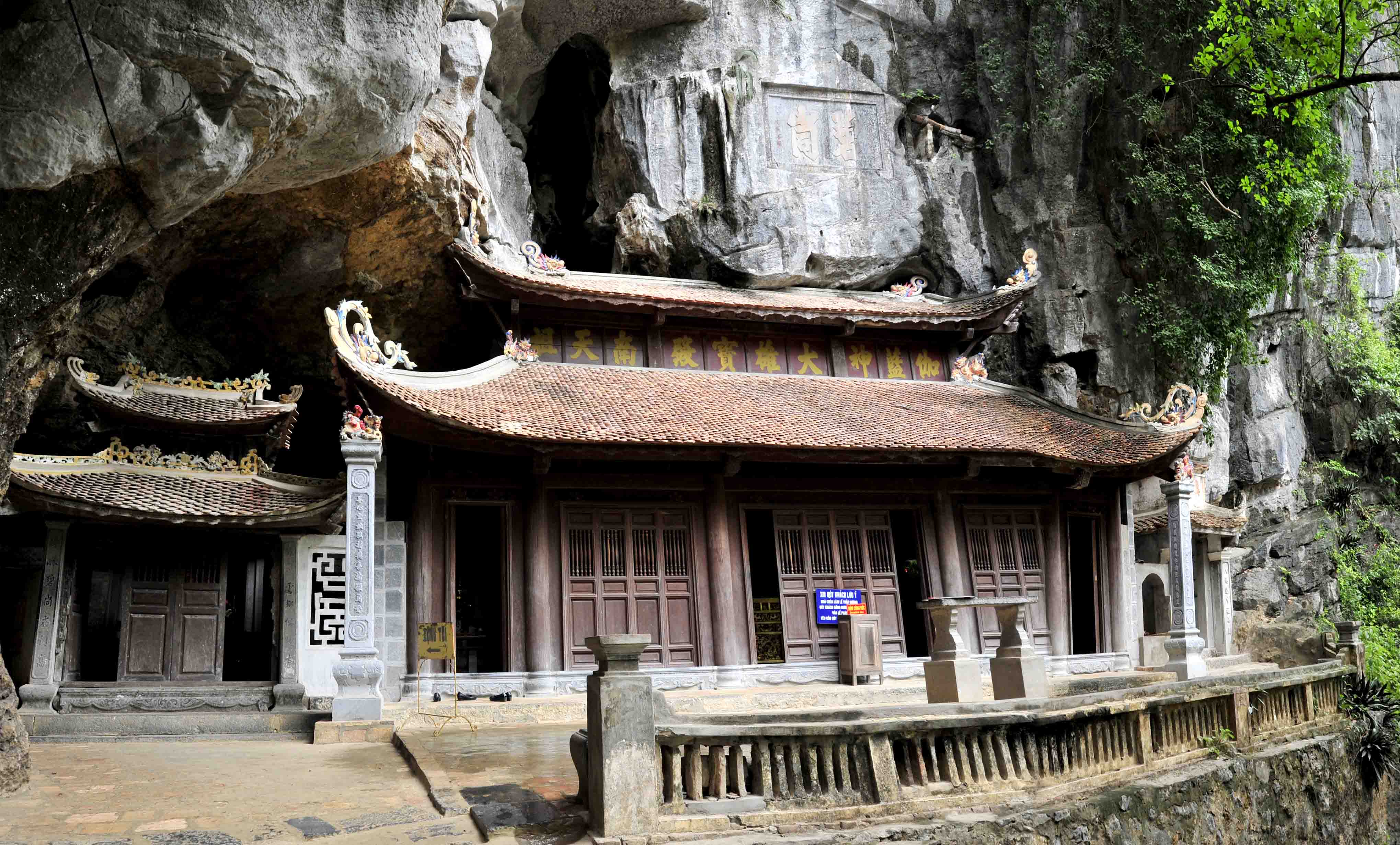The ancient Bich Dong Pagoda was built on a limestone mountain range in Dam Khe village, Ninh Hai commune, Hoa Lu district, Ninh Binh province. The pagoda is known as a cultural historic relic located inside the Trang An – Tam Coc Bich Dong Scenic Area – a special national level ranking relic as well as a part of the world heritage site Trang An Landscape Complex. It is dubbed “The second best cave in Vietnam”

Early in the Hau Le era, in 1428, the Bich Dong Pagoda was initially constructed at the summit of the mountain in the size of a tiny temple. Two monks from Nam Dinh province's Nghia Hung area named Tri Kien and Tri Can met and became brothers in 1705. The two devout monks shared a sincere desire to travel in order to spread Buddhism and establish pagodas. As the two monks arrived, they noticed that Bich Dong mountain contains pagodas and is in a lovely setting. They made the decision to stop, repair the ancient pagoda themselves, and then proceed to the altar to rebuild it into three pagodas: Ha, Trung, and Thuong for meditation. A massive bell which was cast in 1707 by them, is now being hung in the Dark Cave.
Lord Trinh Sam visited the pagoda in the year of the Horse - 1774. As he admired the panoramic view of the mountains, caverns, rivers, fields, and green trees, he gave the pagoda the name Bich Dong. The Bich Dong Ancient Pagoda, in common with any other pagodas, is made of iron woods and its roof is laid with domestic tiles which a curved end, the corners are curved like a blade or like the tail of a phoenix, giving the impression that a magnificent dragon boat is gliding across the water or that two bird wings are spreading upward.
Inspired by the word "Three" in Chinese, the Bich Dong Pagoda was constructed with three separate temples (Lower, Middle, and Upper) built on three levels along the mountain slopes. Additionally, a 350-meter-long cave known as Xuyen Thuy runs beneath the mountain and contains water coming from inside the mountain.
Ha Pagoda has 5 separate rooms built on a high platform at the foot of the mountain. In the temple of Buddha, the architecture of the pagoda is in the type of the word “Dinh”. The rafters and the beams are made of iron wood. The pagoda roof features two tiers of curved roof, including 8 separate roofs. The stone columns at the pagoda are all made of seamless stone, over 4m high.
From the Lower Pagoda 120 steps up in an S-shaped line to the middle of the Ngu Nhac Mountains is the Central Pagoda. Two words are etched onto the cliff. This pagoda has a unique setting that only a few places have, half of the pagoda is inside the caves and the other half is out in the open. The Dark Cave is 6 meters upwards from the Trung Pagoda. It is the main cave which is quite, solemn, long and slightly faces the east. Electric lights fills the long, wide area of Dark Cave. It's all like a stone realm in a fairytale.
Up to the Thuong Pagoda, travelers must go to roughly 40 stone steps along the mountain side. Thuong Pagoda is also known as Dong Pagoda worshiping Bodhisattva. At the peak of Bich Dong mountain, this is the pagoda's highest location. Five mountains, collectively known as Ngu Nhac Mountains, stand apart in front of Bich Dong peak and resemble five petals of a lotus from the view in Thuong Pagoda. The Bich Dong Pagoda is a highly distinctive element of village culture, holding a prominent place in Hoa Lu cultural legacy and serving as a symbol of pride for Ninh Hai's homeland and villag
The Bich Dong Pagoda is a highly ethnic element of village culture, holding a prominent place in Hoa Lu cultural legacy and serving as a symbol of pride for Ninh Hai's homeland and village. Also, it is a venerable and solemn piece of human art that has been incorporated with the lush, green surroundings of nature, adding to the overall beauty of the Tam Coc and Bich Dong region.